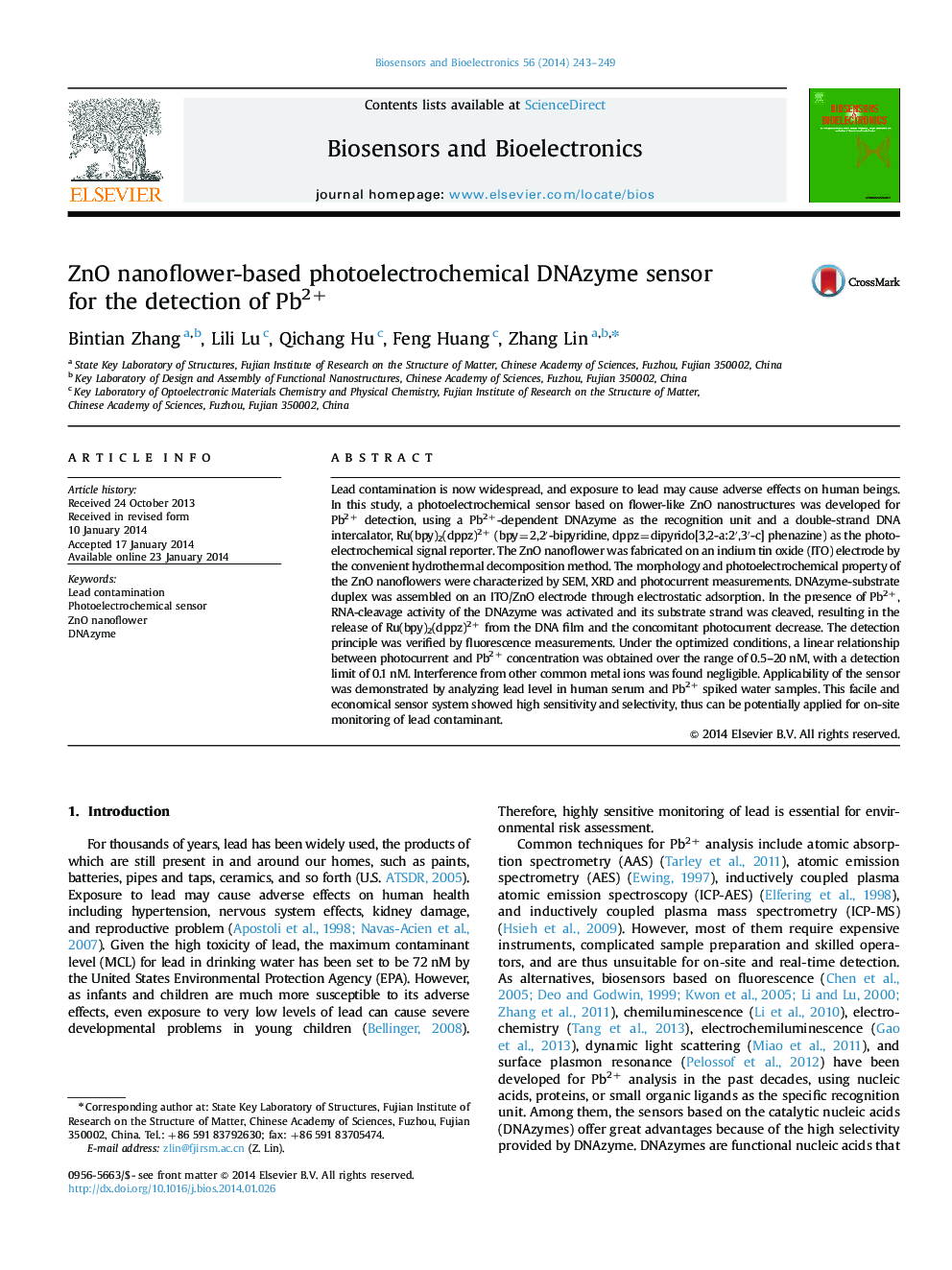| کد مقاله | کد نشریه | سال انتشار | مقاله انگلیسی | نسخه تمام متن |
|---|---|---|---|---|
| 866641 | 1470975 | 2014 | 7 صفحه PDF | دانلود رایگان |

• A novel photoelectrochemical DNAzyme sensor was developed for Pb2+ detection.
• Flower-like ZnO nanostructure was employed as the electrode material.
• The detection limit of the sensor was 0.1 nM.
• The sensor allows selective and sensitive detection of Pb2+ in human serum and water samples.
Lead contamination is now widespread, and exposure to lead may cause adverse effects on human beings. In this study, a photoelectrochemical sensor based on flower-like ZnO nanostructures was developed for Pb2+ detection, using a Pb2+-dependent DNAzyme as the recognition unit and a double-strand DNA intercalator, Ru(bpy)2(dppz)2+ (bpy=2,2'-bipyridine, dppz=dipyrido[3,2-a:2',3'-c] phenazine) as the photoelectrochemical signal reporter. The ZnO nanoflower was fabricated on an indium tin oxide (ITO) electrode by the convenient hydrothermal decomposition method. The morphology and photoelectrochemical property of the ZnO nanoflowers were characterized by SEM, XRD and photocurrent measurements. DNAzyme-substrate duplex was assembled on an ITO/ZnO electrode through electrostatic adsorption. In the presence of Pb2+, RNA-cleavage activity of the DNAzyme was activated and its substrate strand was cleaved, resulting in the release of Ru(bpy)2(dppz)2+ from the DNA film and the concomitant photocurrent decrease. The detection principle was verified by fluorescence measurements. Under the optimized conditions, a linear relationship between photocurrent and Pb2+ concentration was obtained over the range of 0.5–20 nM, with a detection limit of 0.1 nM. Interference from other common metal ions was found negligible. Applicability of the sensor was demonstrated by analyzing lead level in human serum and Pb2+ spiked water samples. This facile and economical sensor system showed high sensitivity and selectivity, thus can be potentially applied for on-site monitoring of lead contaminant.
Journal: Biosensors and Bioelectronics - Volume 56, 15 June 2014, Pages 243–249